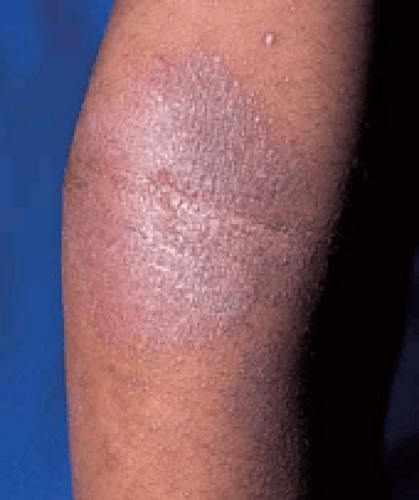Atopic Dermatitis
Lawrence Charles Parish
(ICD-9 691.8)
Symptoms and Signs
The hallmark of atopic dermatitis (AD) is itching, which can be severe. AD is characterized by redness, scaling, and lichenification. In adults, it most commonly occurs in the antecubital and popliteal fossae (Figs. 2-1 and 2-2) and on the nape of the neck. Because there is no true primary lesion, patients with AD often present solely with itching or so-called sensitive skin. As the skin is scratched or rubbed to obtain relief, it may show excoriations, vesiculation, and crusting. Secondary bacterial infection of the skin is common.
Presentation of AD is variable, depending on the age of the patient. In infants and children, the redness and scaling may be on the extensor surfaces, face, or trunk. Infantile AD may be short-lived or may be a prodrome to lifelong dermatitis. As the child grows older, the traditional flexor areas become involved.
Patients with AD often have hyperlinear palms (Fig. 2-3) and infraorbital creases, so-called Dennie–Morgan folds. Rubbing of the lips creates cracking and surrounding erythema, known as the furrowed mouth syndrome. In older
patients or during times of quiescence, the only manifestations of AD may be dryness and scaling—erythema crackle.
patients or during times of quiescence, the only manifestations of AD may be dryness and scaling—erythema crackle.
 Figure 2-1 Atopic dermatitis. Antecubital erythema and lichenification are hallmarks of the disease.
Stay updated, free articles. Join our Telegram channel
Full access? Get Clinical Tree
 Get Clinical Tree app for offline access
Get Clinical Tree app for offline access

|





